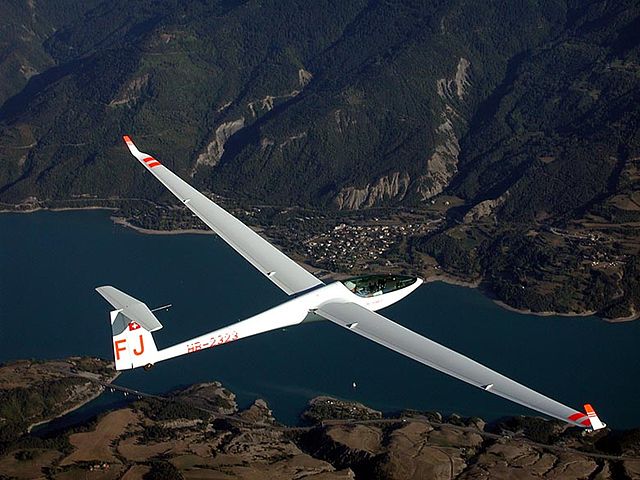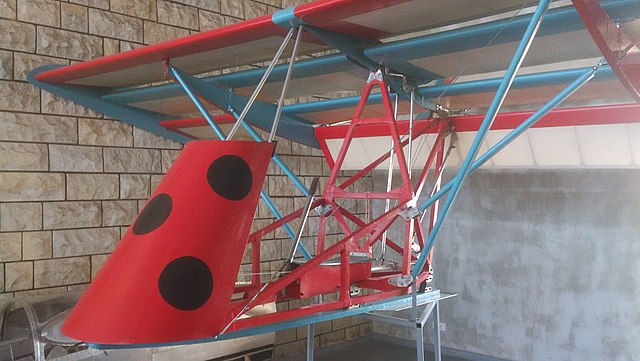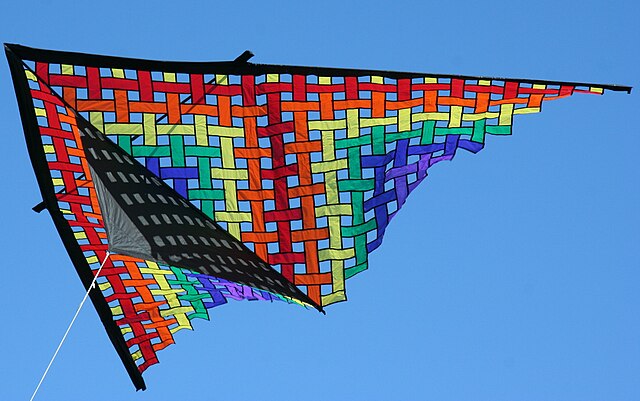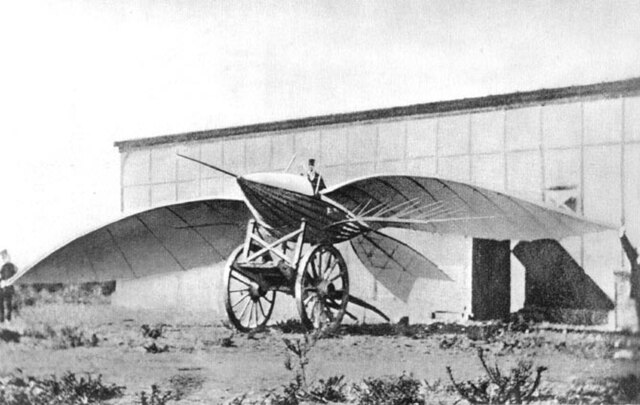A glider is a fixed-wing aircraft that is supported in flight by the dynamic reaction of the air against its lifting surfaces, and whose free flight does not depend on an engine. Most gliders do not have an engine, although motor-gliders have small engines for extending their flight when necessary by sustaining the altitude with some being powerful enough to take off by self-launch.
Single-seat high performance fiberglass Glaser-Dirks DG-808 glider over the Lac de Serre Ponçon in the French Alps
Aerobatic glider with tip smoke, pictured on July 2, 2005, in Lappeenranta, Finland
Otto Lilienthal in flight
Smallest glider in the world – BrO-18 "Boružė" (Ladybird), constructed in Lithuania in 1975
A fixed-wing aircraft is a heavier-than-air flying machine, such as an airplane, which is capable of flight using aerodynamic lift. Fixed-wing aircraft are distinct from rotary-wing aircraft, and ornithopters. The wings of a fixed-wing aircraft are not necessarily rigid; kites, hang gliders, variable-sweep wing aircraft, and airplanes that use wing morphing are all classified as fixed-wing aircraft.
A Boeing 737 airliner is an example of a fixed-wing aircraft
The fixed wings of a delta-shaped kite are not rigid
Children flying a kite in 1828 Bavaria, by Johann Michael Voltz
Le Bris and his glider, Albatros II, photographed by Nadar, 1868








